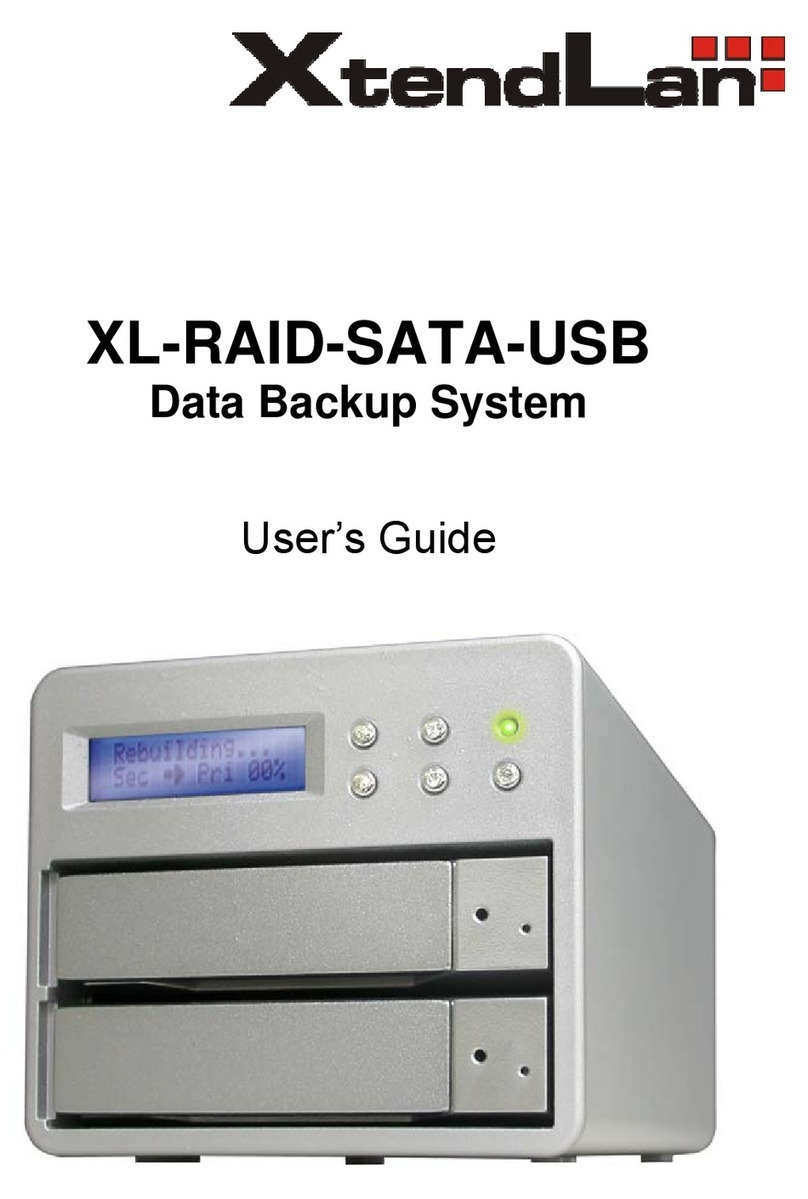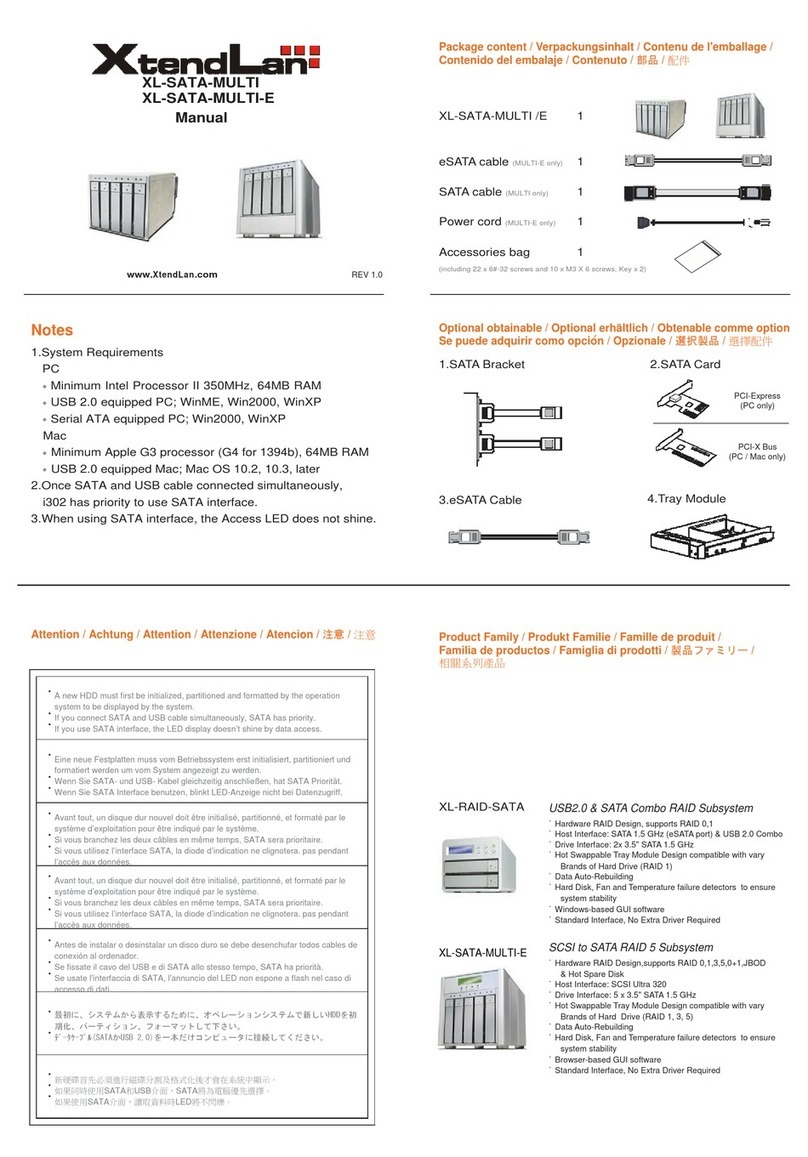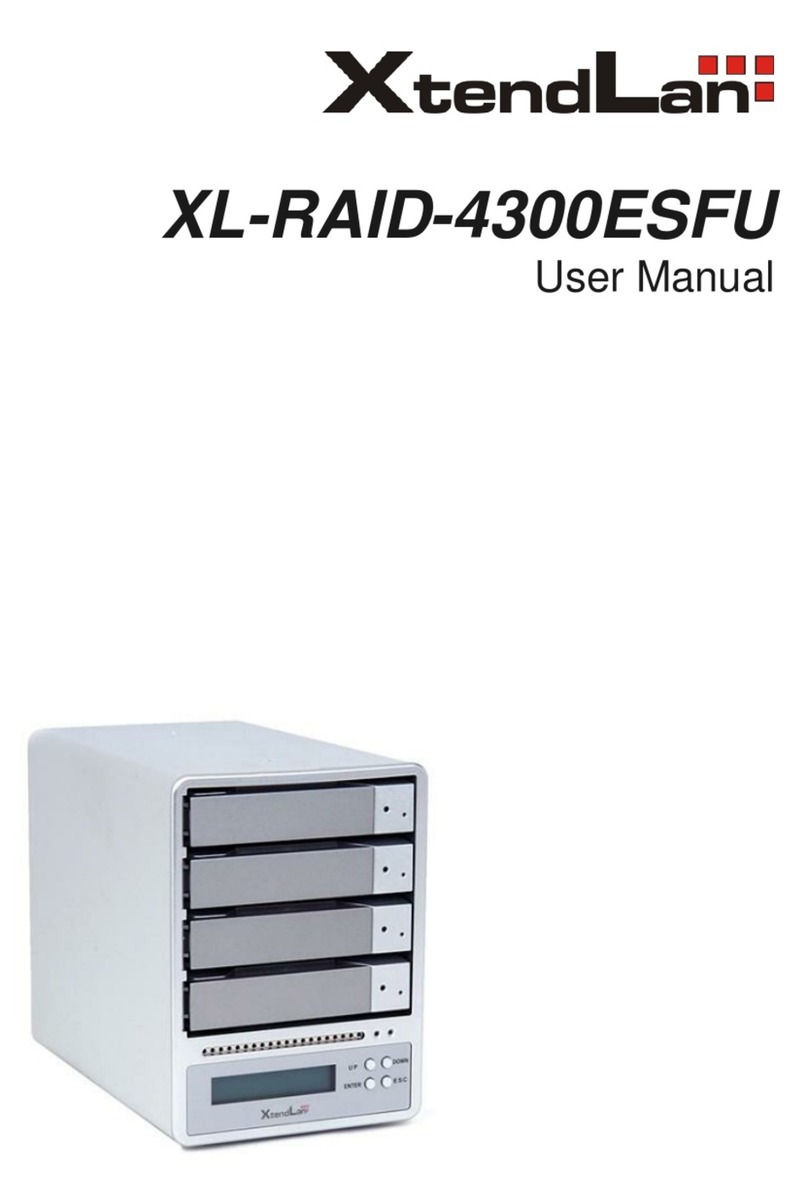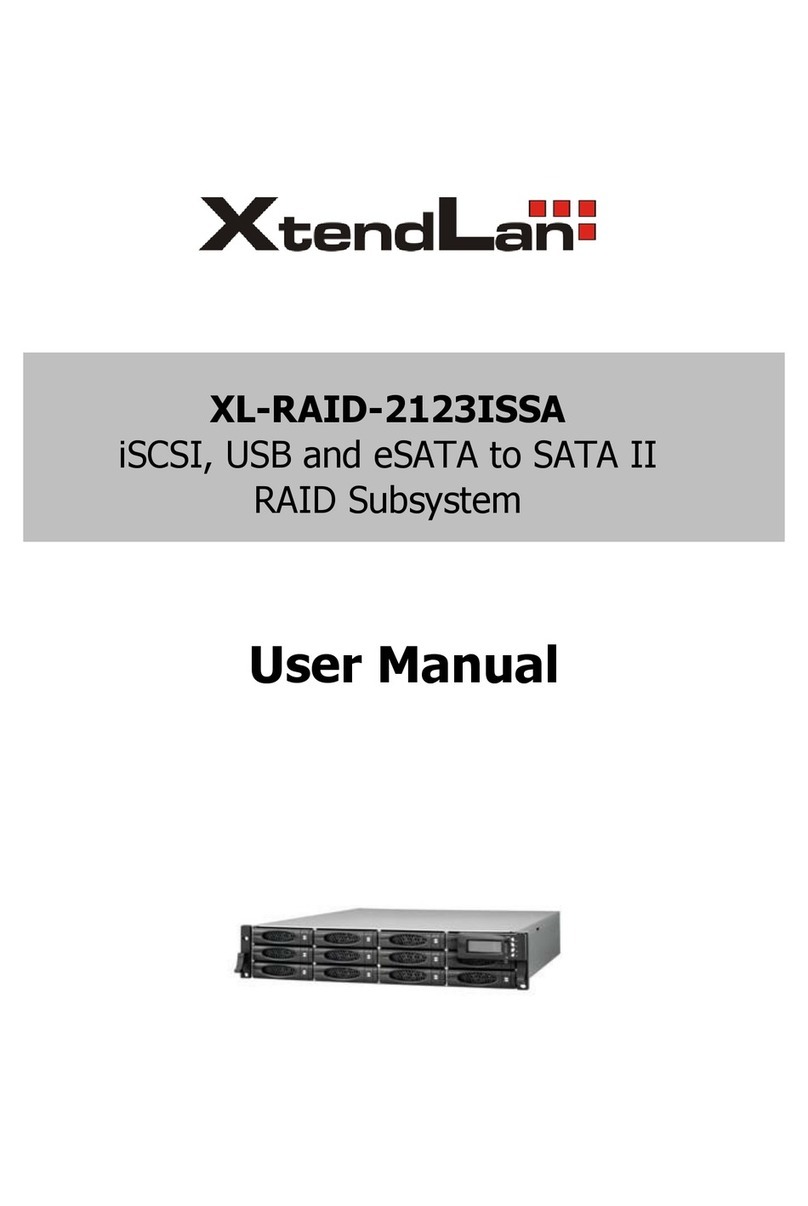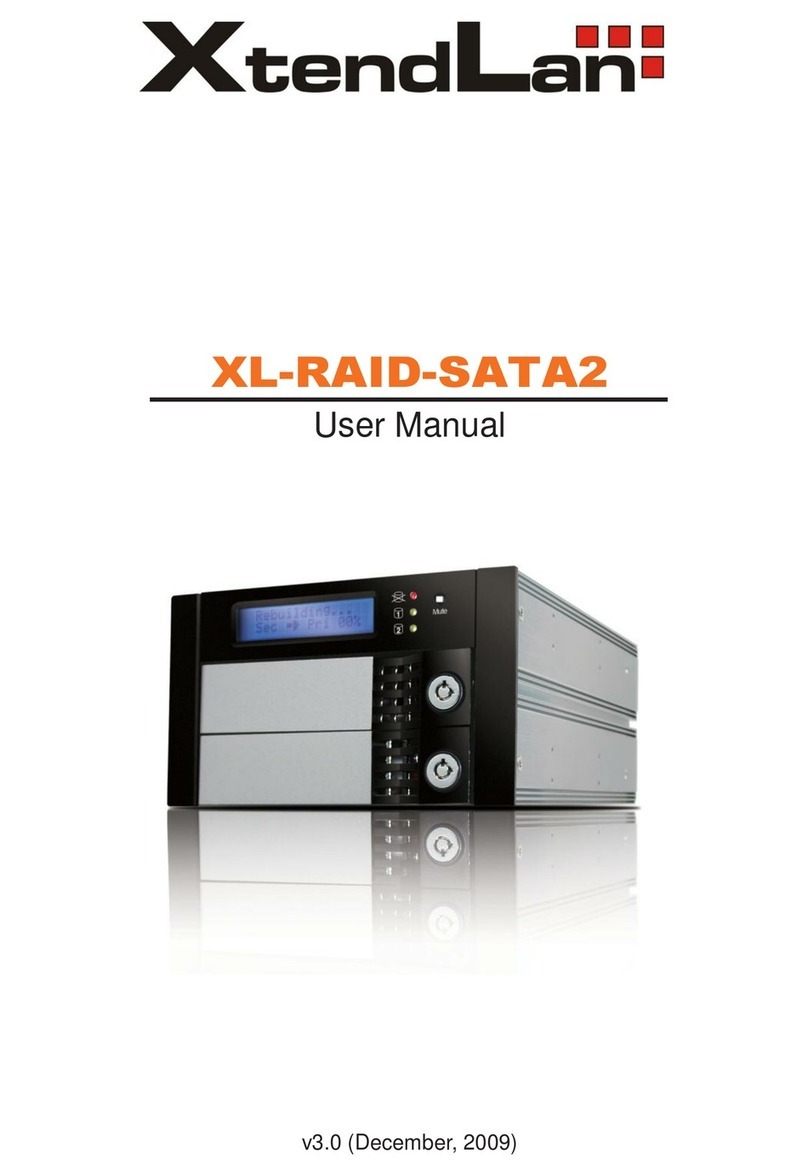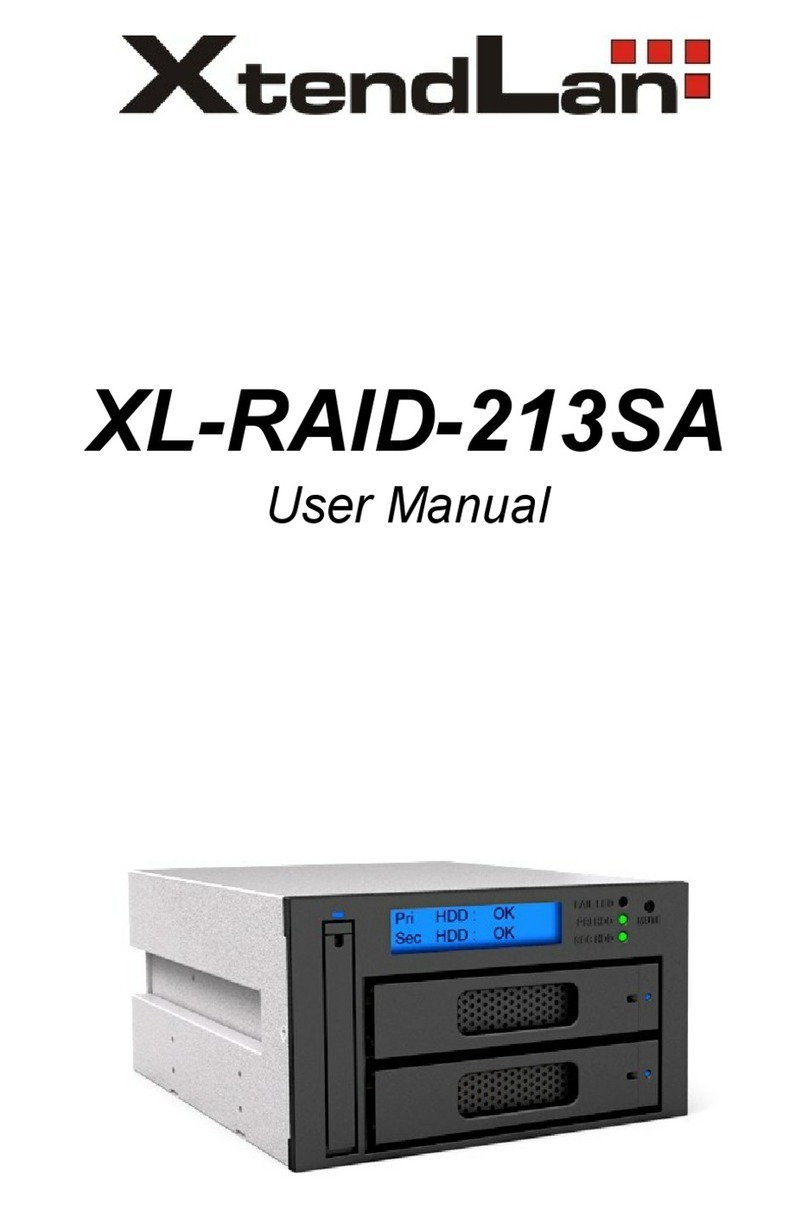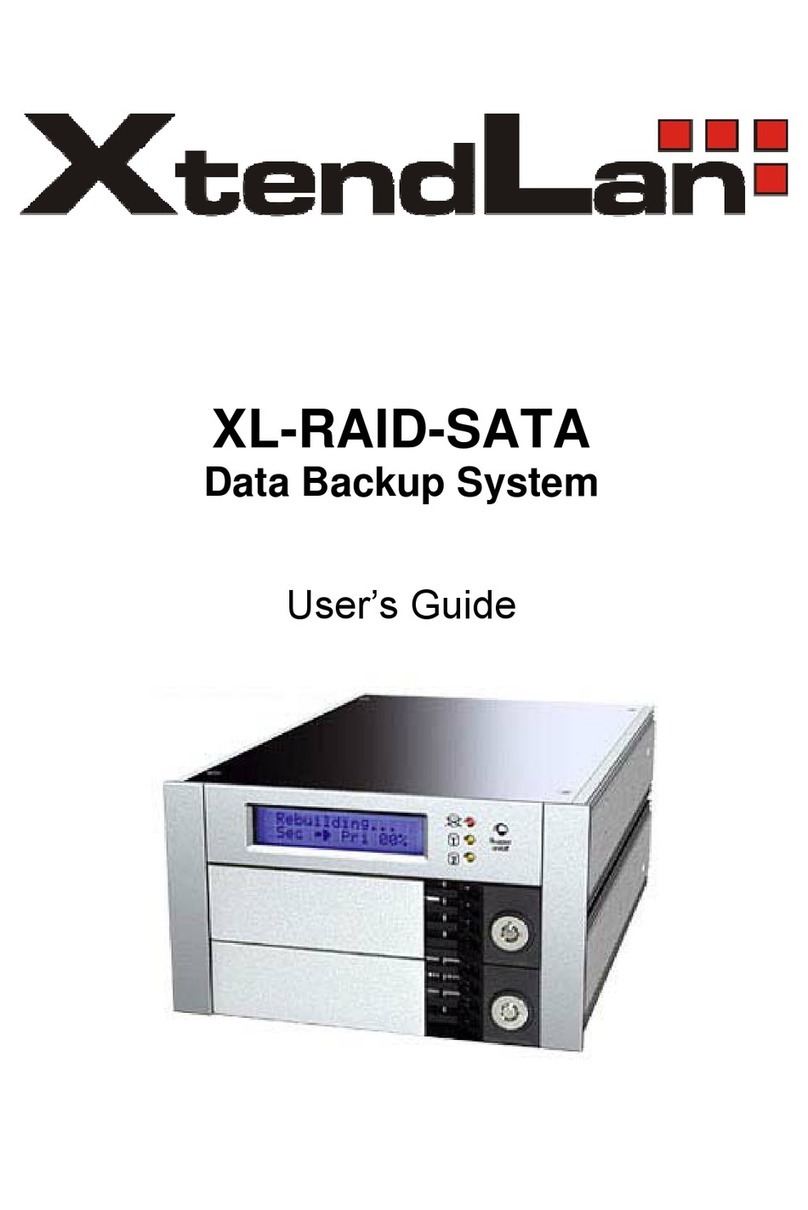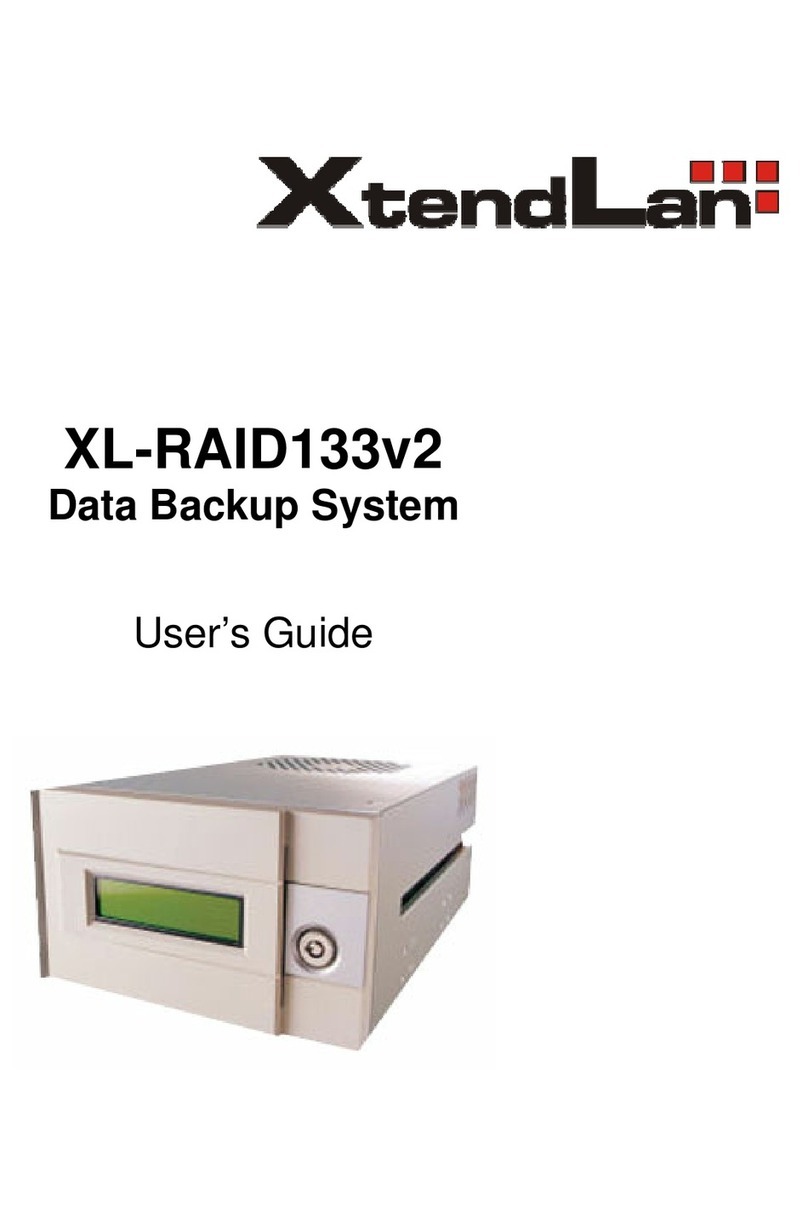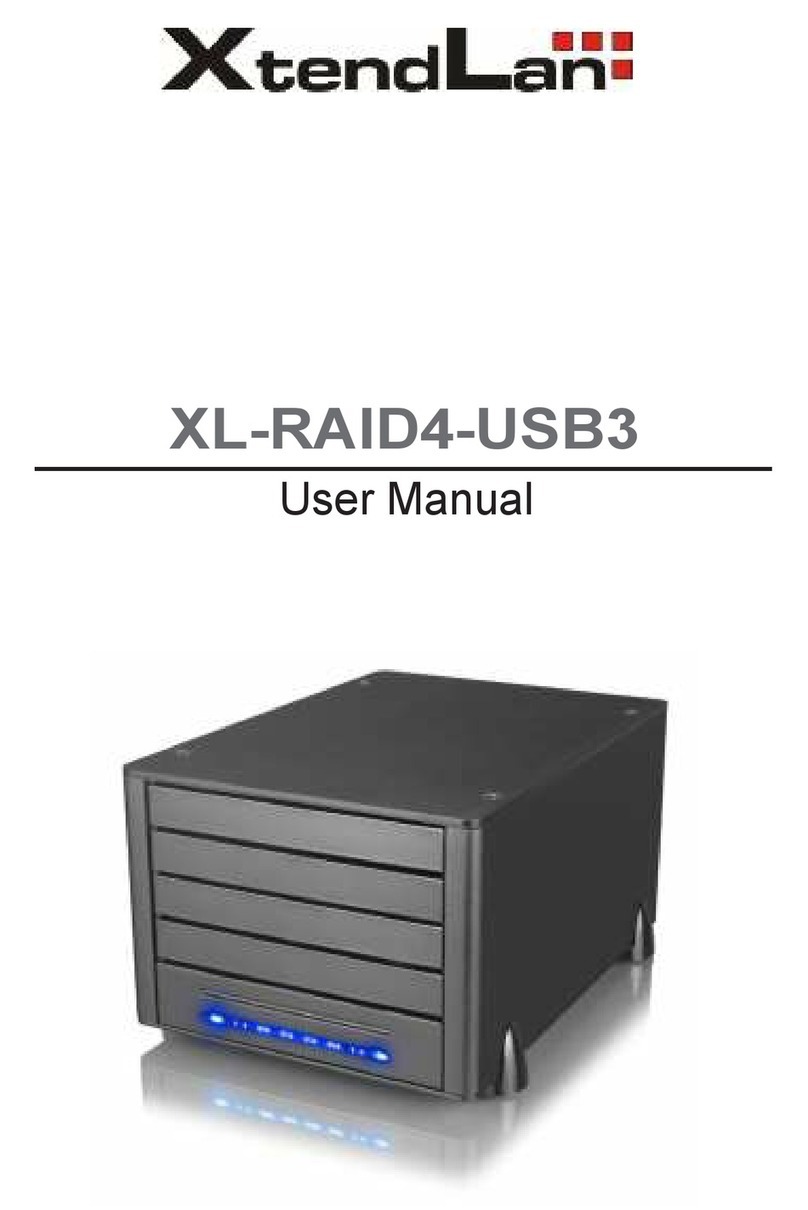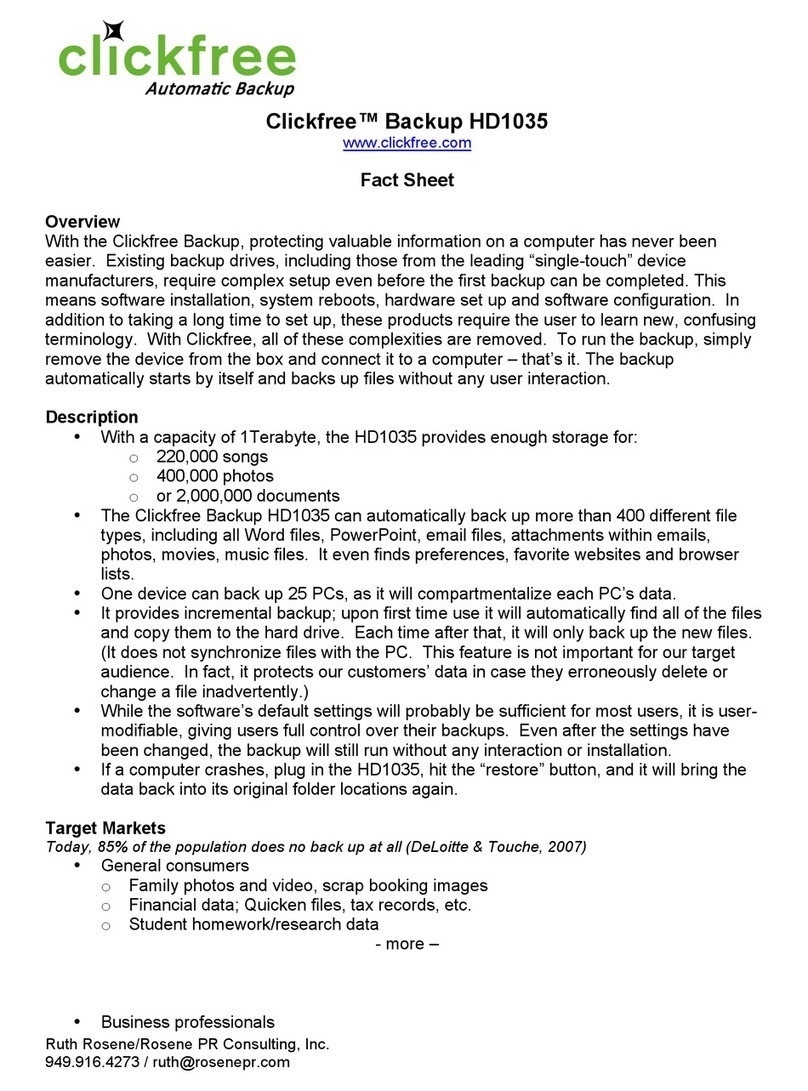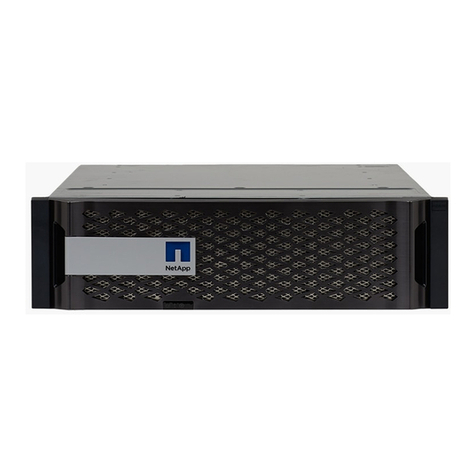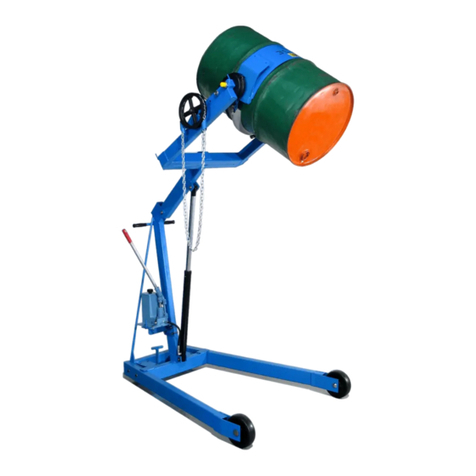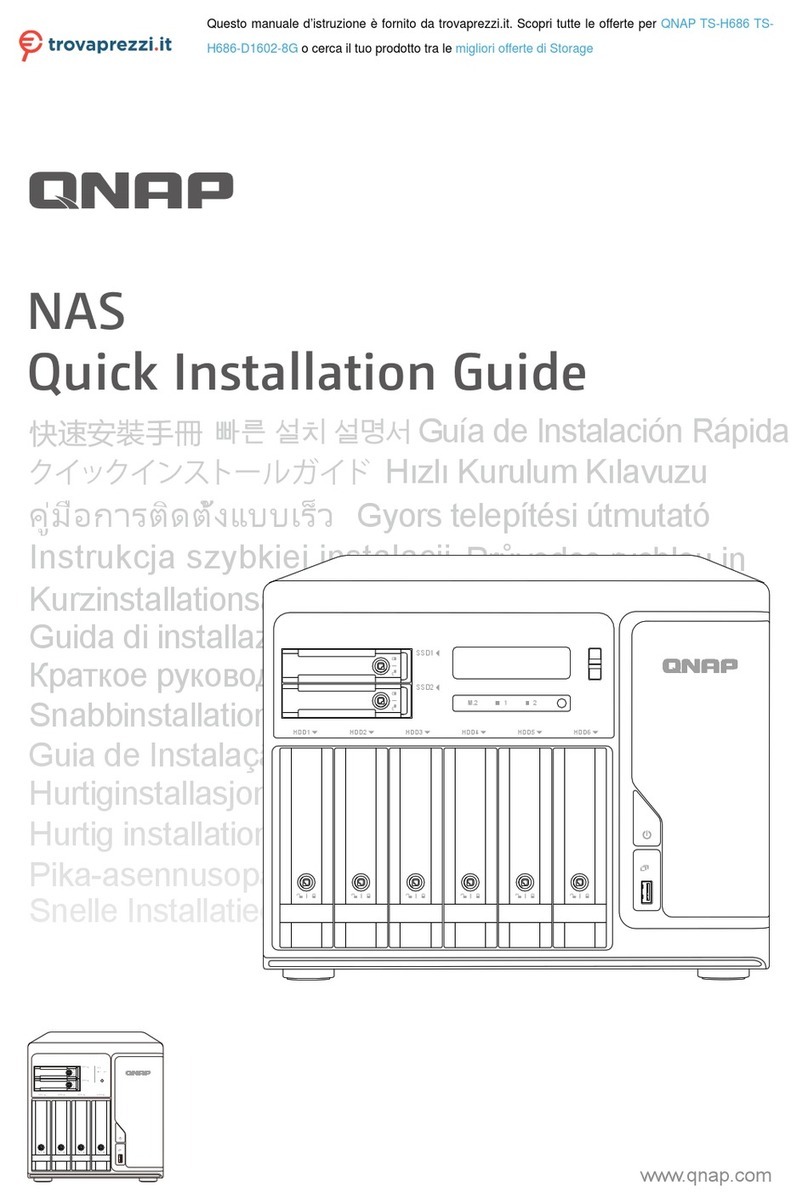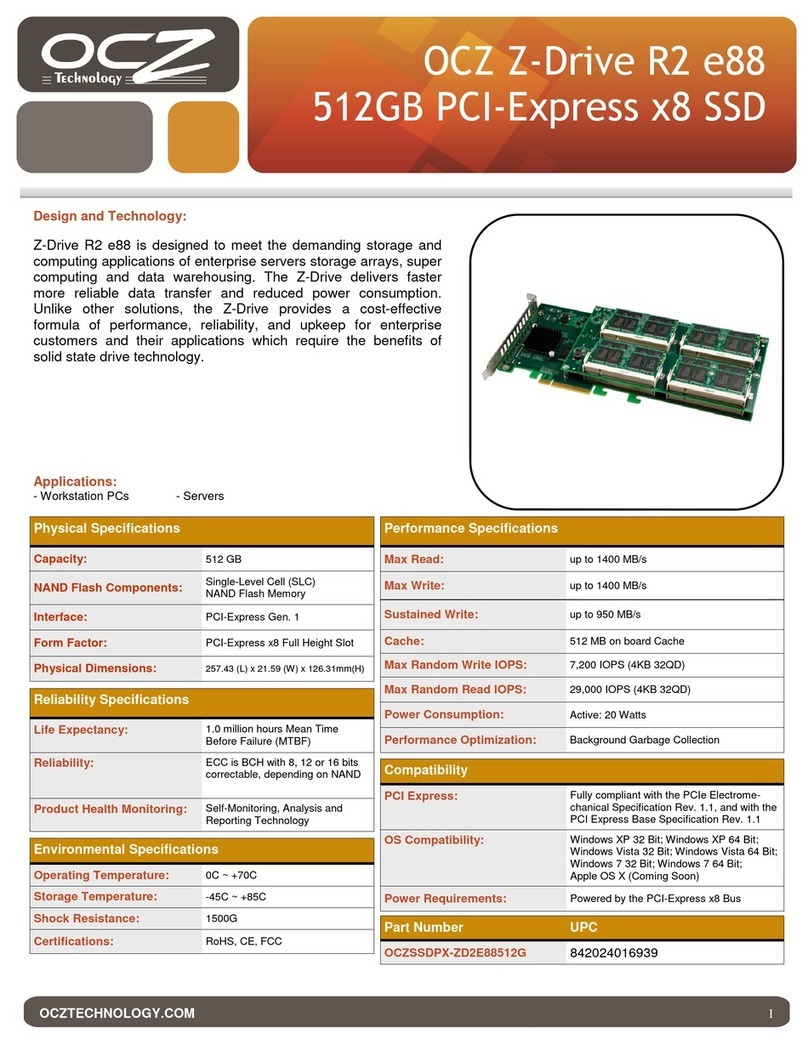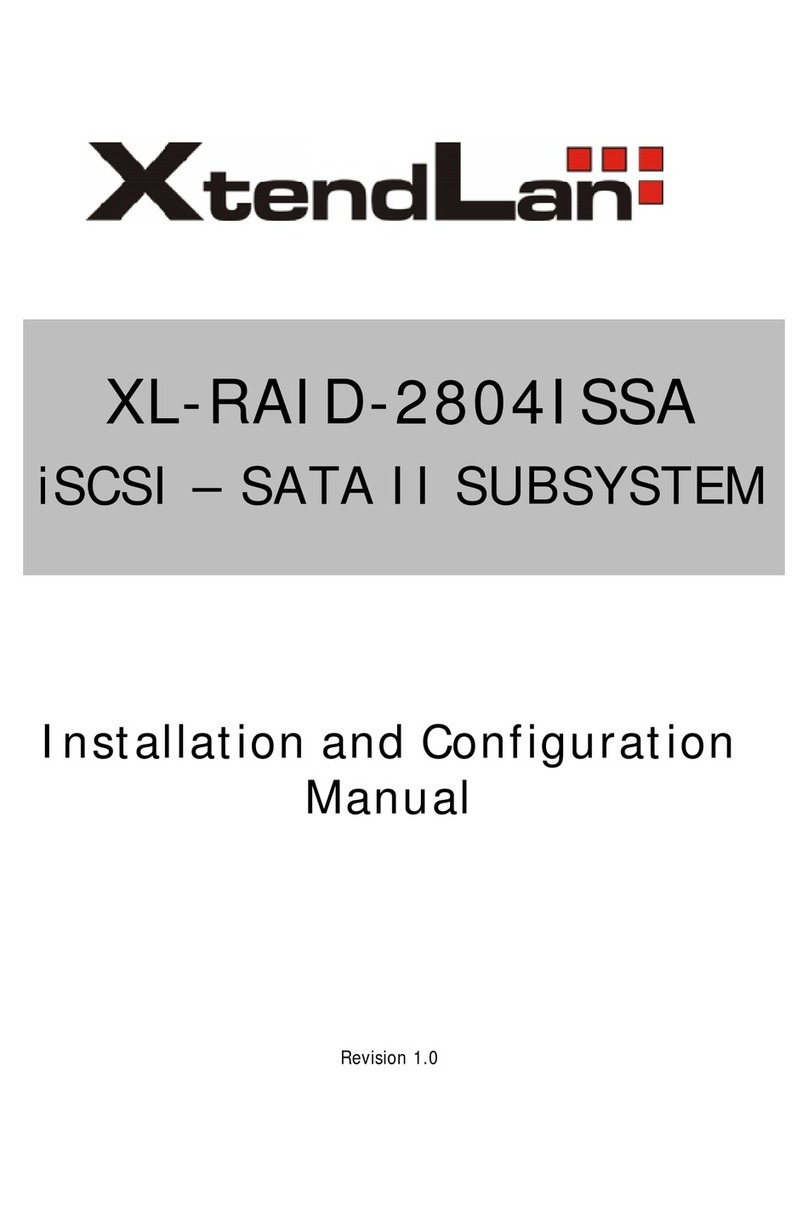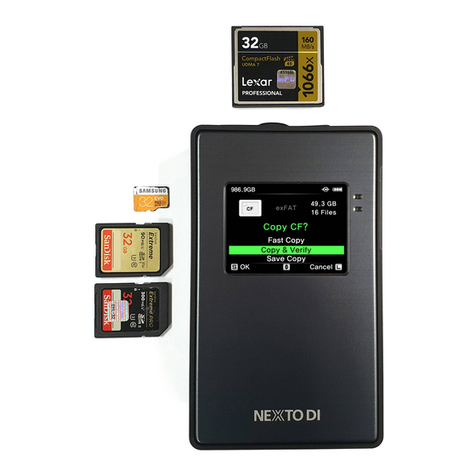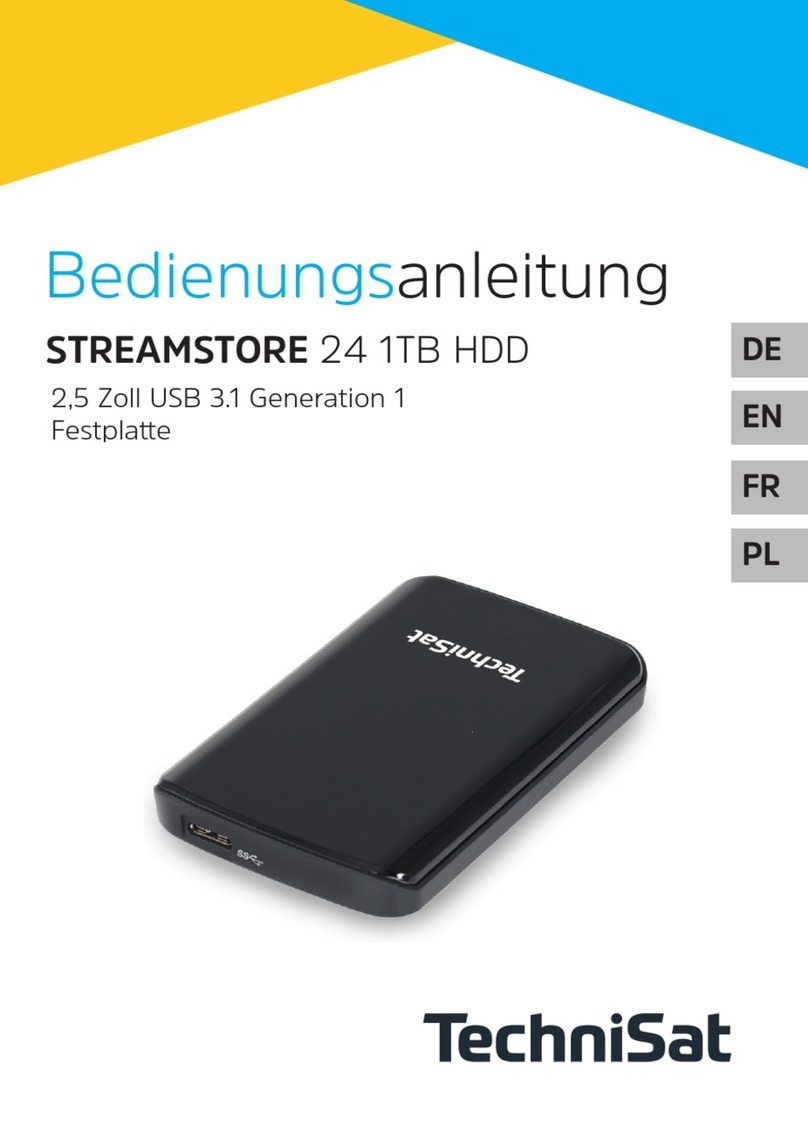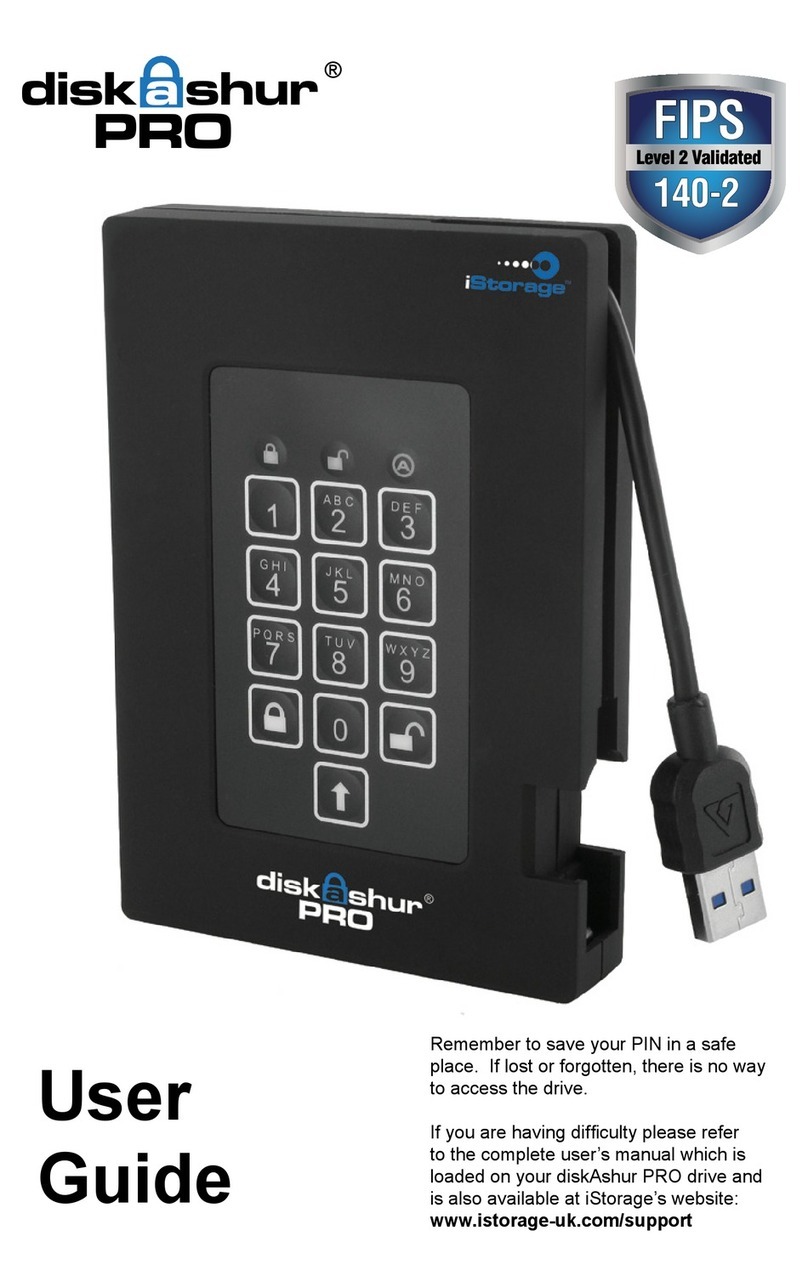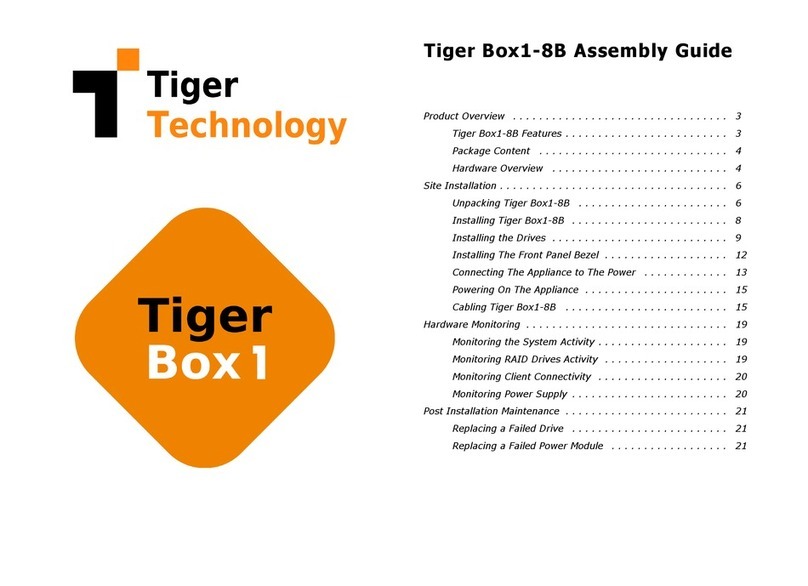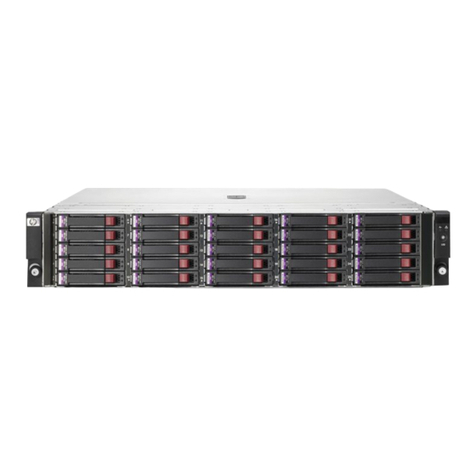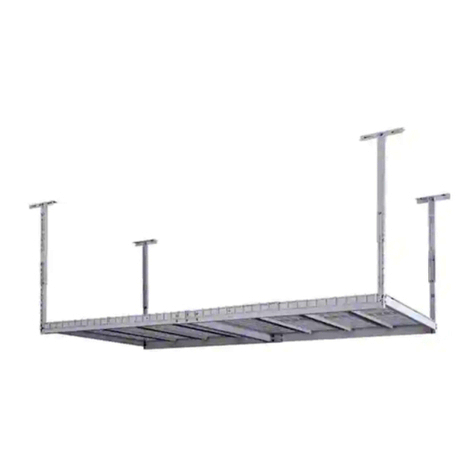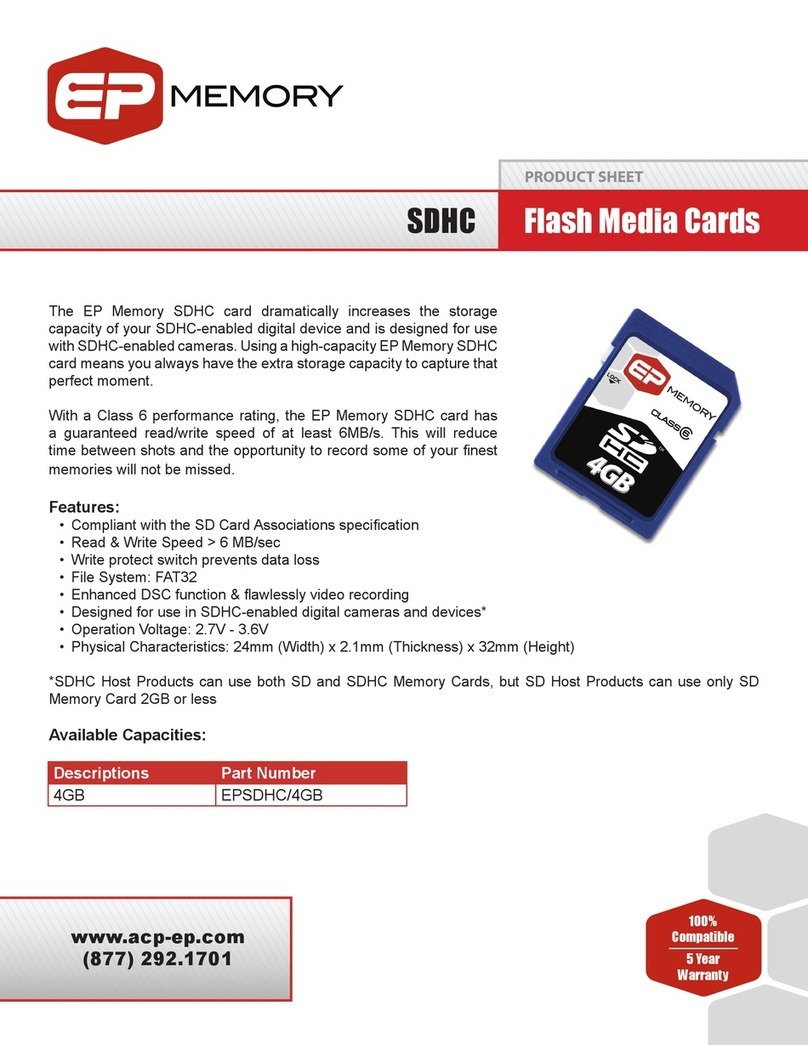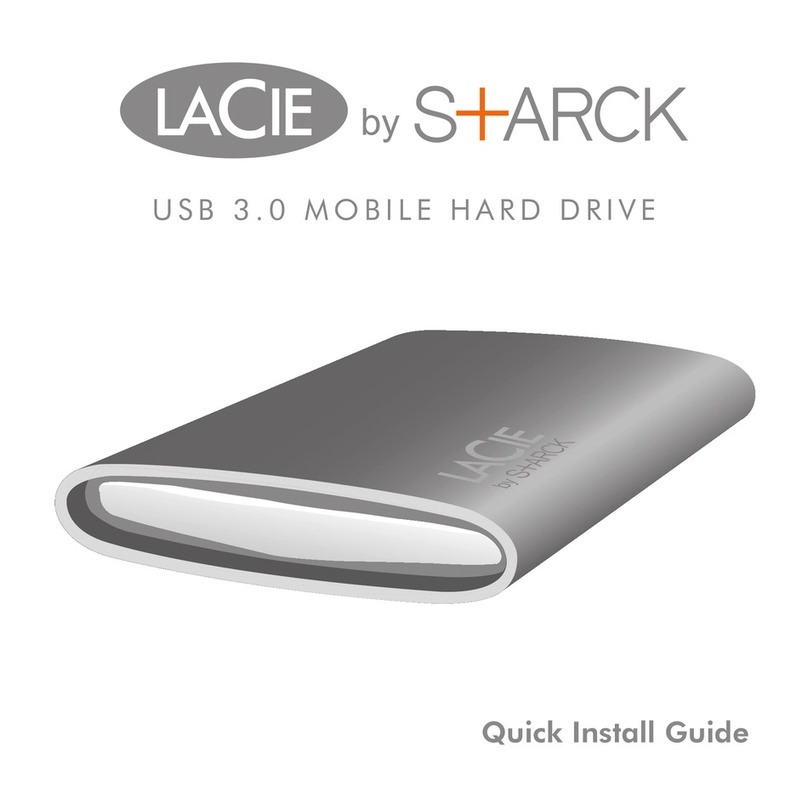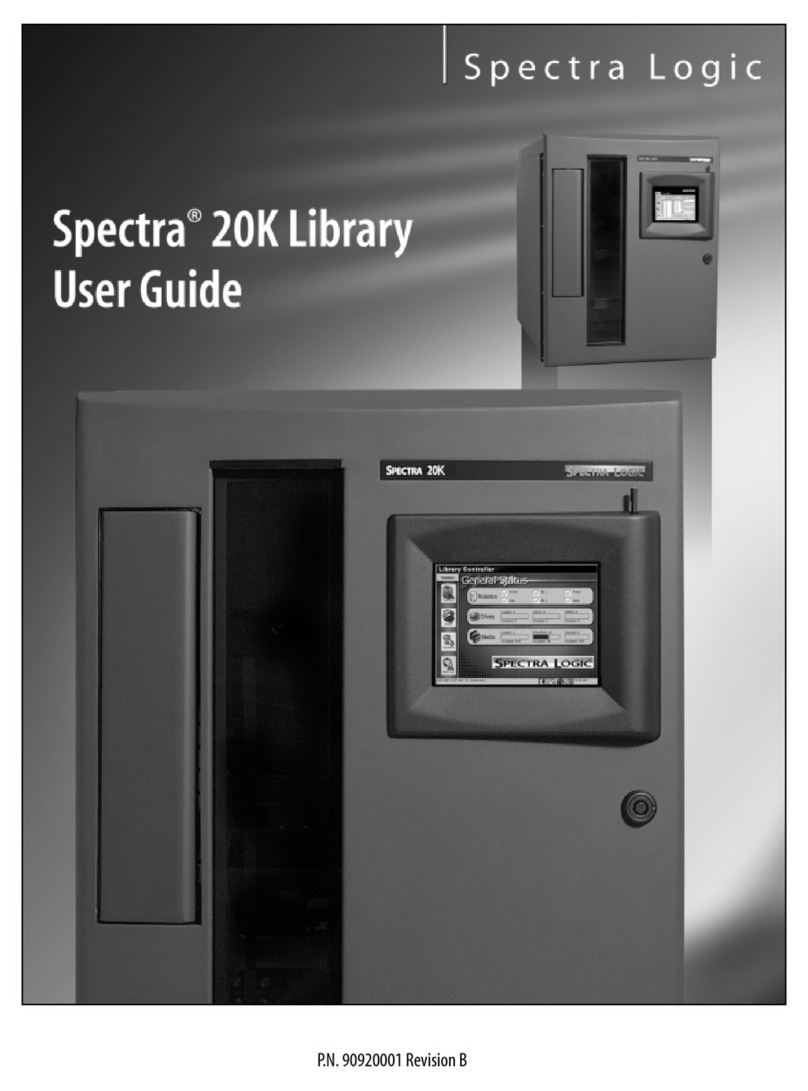A. RAID 0
The capacities of all four 3.5’’HDs are added together and accelerate the reading speed. If the
capacities of the four HDs are different from each other, you can use the HD with the lowest
capacity as the basis for adding. For example, if RAID 0 needs to be set for one 100GB HD
and three 500GB HDs, the total capacity should be: 100GB x 4 = 400GB.
B. RAID 1
The two HDs are written synchronously to back up the data. If one HD is damaged, the system
can keep running with the backup data. Once the damaged HD is replaced with a new one,
the data will be re-configured automatically.
C. LARGE
The capacities of all four 3.5 HDs are added together, even if their capacities are different from
each other. For example, if LARGE needs to be set for one 100GB HD and three 500GB HDs,
the total capacity should be: 100GB + 500GB x 3 = 1600GB.
D. RAID 3
The capacities of all N-1 HDs are added together to form the total capacity. With the fault-
tolerance function, even if one HD is damaged, the system can keep running. Once the
damaged HD is replaced with a new one, the data will be re-configured automatically. If the
capacities of the four HDs are different from each other, you can use the HD with the lowest
capacity as the basis for adding.
E. CLONE
The four HDs are written synchronously to back up the data. If one HD is damaged, the
system can keep running with the backup data. Once the damaged HD is replaced with a new
one, the data will be re-configured automatically.
F. RAID 5
The capacities of all N-1 HDs are added together to form the total capacity. With the fault-
tolerance function, even if one HD is damaged, the system can keep running. Once the
damaged HD is replaced with a new one, the data will be re-configured automatically. If the
capacities of the four HDs are different from each other, you can use the HD with the lowest
capacity as the basis for adding.
G. RAID 10
Use the first and second HDs and the third and forth HDs respectively, all counted from the
left, to make two groups of RAID 1. Thus a RAID 0 mode is created. As there are two groups
of RAID 1, there will be one fault-tolerated disk in each group.




















